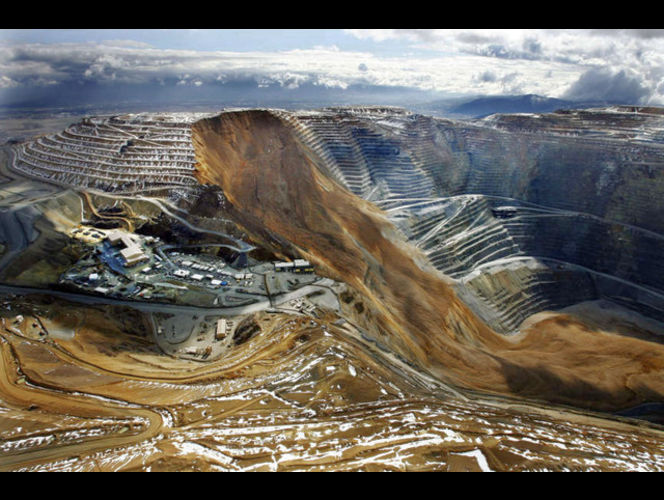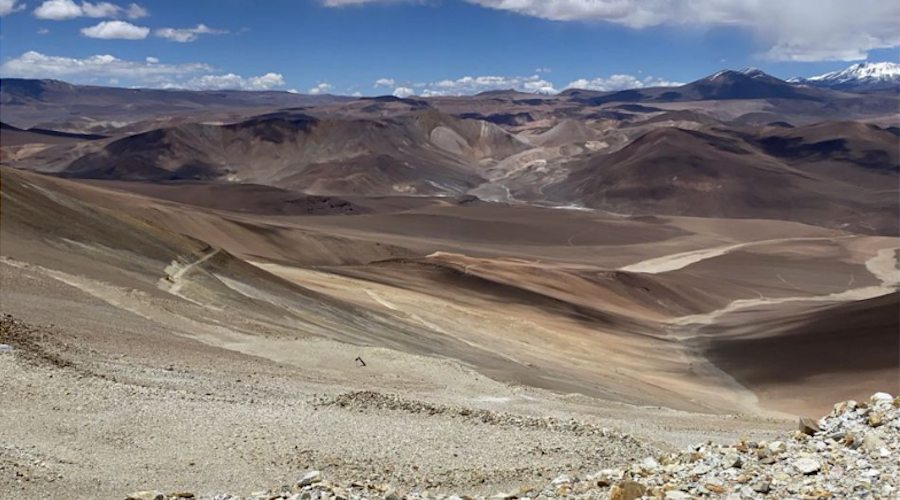The Bingham Canyon Mine slope failure
A massive slope failure has occurred at the open pit of the Bingham Canyon Mine in Utah.
Here is a link to a magnificent collection of photographs of the failure, which appears to have taken out part of a building, access roads, and filled the bottom of the pit with slide material.
Nobody was hurt: the mine had been monitoring movement and when deformation increased, from 1 mm a day to 5 mm day, they pulled out all workers. A fine testament to the engineers who study rock and soil slope stability in the open pit mine context.
Here is how one news report tells the story:
The world’s largest man-made excavation – a US copper mine – has been shut down by an enormous landslide that smashed roads and buildings and left two-thirds of the pit base buried. Bingham Canyon Mine is the largest man-made excavation in the world. It has been in production since 1906, and features a pit almost one kilometre deep and 4km wide.
Ted Himebaugh, Kennecott’s general manager of operation readiness, said he had seen nothing like it in his 36 years with the company.
“Our primary goal now is to determine how we can safely resume operations and provide not only the jobs for the people but money to the state of Utah and economy,” Himebaugh told Desert News.
Kennecott is the second largest copper producer in the US, supplying about a quarter of the country’s copper, the company’s website states.
Another report notes:
The company has not been able to measure the magnitude of the slide and doesn’t know if there will be any residual sliding in the days to come. Bennett said experts will continue monitoring the area remotely for other possible slides.
See and watch Dave Petley on his blog. He posts more information and promises more insightful analysis as data becomes available.
Predictably, mining critics were quick to weigh in. As noted on one report:
“Well, I guess we can now add landslides to the long list of hazards created by that mine,” said Brian Moench, president of Utah Physicians for a Healthy Environment. “And I’m sure the dust [from the slide] will at least add another temporary pollution burden on our community.”
Utah Physicians for a Healthy Environment was one of several environmental groups that filed suit against Kennecott in late 2011 for violating the Clean Air Act for nearly five years. That lawsuit, still underway, noted that Kennecott is one of Utah’s biggest sources of particle pollution, partly from dust kicked up as crews dig and haul ore.
The mine replied that “minimal dust resulted from the slide.”
Heavy Equipment forums, a discussion board at this link, speculates that “maybe 20 trucks and a couple of loaders” are buried beneath the debris.
I have never visited the mine although i have seen it from the air. The photo above makes me wonder if the upper part of the slide is not through a waste rock dump.
I cannot find any analysis of the slide and pit closure on the financial performance of the mine. Let us know what you think of possible share price movement.
P.S. After posting this piece, a fine comment appeared: read it. I also went to the guy who runs the InfoMine Companies and Properties database. We determined that the mine is deeply embedded in the Rio Tinto shareholding system—you cannot buy shares in Bingham Canyon, only in Rio Tinto. As the comment below notes, the Rio Tinto share price dipped a tiny bit on news of the failure. But nothing by comparison with the drop that reflects the drop in price of copper.
There seems to be a surplus of copper for purchase and the price is dropping. Maybe the interruption of supply from Bingham Canyon will prop up the price of copper. Crazy world! Where slope failure increases the price of a commodity. And where one huge mine is so small a part of an international company that its failure means nothing.
How did the Mormons let this happen? I mean here are British imperialists ruling the colonies to their benefit and the Utah folk are but pawns in a world-wide enterprise. Or do the ruling Mormons own lots of shares in Rio Tinto? And thereby benefit. Is it reasonable to postulate an investment rule: put your money where the Mormon Church puts theirs?
For more from Jack Caldwell, see his blog, I Think Mining
Image: KSL.com screengrab
More News
{{ commodity.name }}
{{ post.title }}
{{ post.date }}





Comments
Danielle Menezes
I would like to mention the photo of this publication in an paper and would like to know how I could have permission to use it in my paper.